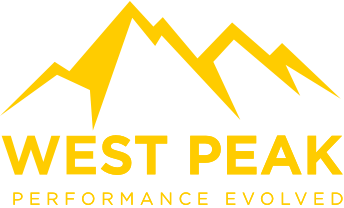What is this the best way to measure productivity?
Man United boss orders workers back to the office after ‘20 per cent drop in emails’ – but is this the best way to measure productivity?
With several firms implementing a ban on remote work, People Management asks experts if there are more accurate ways to track organisational output.
Sir Jim Ratcliffe, Manchester United’s new investor, has banned working from home and ordered all employees to work in the office, citing email traffic figures as the rationale for his decision.
According to the Guardian, Ratcliffe informed approximately 1,000 employees during an all-staff meeting that email traffic had dropped by 20 per cent when one of his companies experimented with ‘work from home Fridays’.
He said he believed that having all employees onsite would boost productivity, strengthen unity and foster collaboration. He also instructed employees: “If you don’t like it, please seek alternative employment.”
While a working group has been instructed to implement the new policy, some employees have noted that there is not enough space at the club’s Manchester or London premises to accommodate everyone, according to the Guardian.
But the club is not the first company to push staff back into the office. Earlier this year, Boots announced that 3,900 head office employees would be required to return to the office five days a week, and JD Sports has also mandated that all employees in its head office return for at least four days a week.
With Manchester United’s minority owner citing a drop in emails as the reason for his decision, People Management asks experts what this tells us about workplaces and how businesses should accurately measure productivity.
Drop in emails ‘doesn’t confirm a drop in productivity’
Ben Stocken, CEO of team performance experts West Peak, said: “Too many leaders still confuse productivity with busyness, and using ‘number of emails sent’ as a measure of effective working is nonsense.
“Leaders need to focus on the ultimate business outcome they’re trying to achieve. Judging from Manchester United’s performance on the pitch this season, it’s hard to see how this could possibly be improved by workers sending more emails.
“These changes at Manchester United are part of a wider battle between employers trying to enforce outdated working patterns and employees fighting for the freedoms they’ve enjoyed since the pandemic.
“Conscientious workers have shown that they can be equally productive from home, and the reward has been a greater flexibility towards work and a better work/life balance.
“The ‘remote work genie’ is out of the bottle and it’s too late to squeeze it back in. Workers have seen the benefits of the new way of working, and will increasingly resist draconian returns to old rigid models.
“Savvy employers need to embrace hybrid working as a competitive advantage for attracting talent. Inflexible policies raise the risk of higher staff turnover, strikes, difficulties filling roles, and a tarnished employer brand.”
Molly Johnson-Jones, CEO and founder of Flexa, says: “A drop in emails certainly doesn’t confirm a drop in productivity.”
There are a multitude of reasons staff could be sending fewer emails on Fridays, she says: “For instance, staff may have dedicated their remote working time to projects that require deeper focus, saving admin tasks like sending emails for days in the office, when there could be more distractions.
“Employers that rely on flawed measures of productivity like email output only get half the story. Plus, reliance on employee monitoring metrics can lead to cultures of presenteeism, where appearing busy matters more than work well done. Staff who feel pressured to work performatively cannot work at their best, no matter where they work from.”
Daniel Wheatley, reader in business and labour economics at University of Birmingham Business School, says: “Time spent remote working from home is often used as a factor or concentration time, with more limited interaction a purposeful feature and one that actually represents a positive deployment of employee effort that supports overall higher levels of productivity as focused individual tasks are completed at home and collaborative activities are undertaken when in the office.
“Organisations wedded to locating employees at a workplace and using simple metrics such as email traffic as a proxy measure for employee effort are scoring an own goal.”
How are firms deciding on office policies?
Jane Ferré, executive career coach, says there is a “lack of trust” from some leadership teams about what their people are doing when they are working from home, made “evident” by the case at Manchester United.
She says this could trigger a form of ‘quiet quitting’, as “if we force people back into the office they will hate it so much that they will find alternative employment and the company does not have to pay any severance”.
Meanwhile, Johnson-Jones says Ratcliffe’s return-to-office demand is part of a trend for a “top-down approach, driven by a lack of trust and communication between staff and senior management”.
She adds: “[But] you need only look at the backlash from staff at organisations like the ONS and Grindr to see that mandates from the top will only lead to employee resentment and loss of talent.”
Johnson-Jones says companies must engage with employees about their working needs and preferences, and then work with them to revise or create office regulations that meet the interests of both employees and the company. “This is the only way both parties can thrive,” she explains.
So how should businesses measure productivity?
Jim Moore, employee relations expert at Hamilton Nash, says managing performance comes down to one simple principle: “Set clear expectations, KPIs, goals and objectives, and then hold people accountable for delivering against these targets.”
He adds that it should not be more complicated than that and, as long as people are meeting expectations, it does not matter where they are. “Managers who believe that remote workers are always less productive need to first question their own management competencies,” he explains.
Similarly, Johnson-Jones says productivity must be measured in outcomes and the quality of completed work, “not the number of emails sent or where they are sent from”.
Meanwhile, Wheatley says the relative suitability of methods of measuring productivity will differ considerably across sectors, organisations and occupations. However, he adds: “Common, though, is that a focus should be given to output rather than working hours or other measures that tend toward equating productivity with presenteeism.”
Wheatley also explains that measures must be tailored to the core functions and deliverables of the job and methods of monitoring employee activity and engagement must not “distract and detract from real productivity, but rather should support employees to complete tasks effectively regardless of workplace location”.
Subscribe to our Podcast
Hosted by our very own Ben Stocken and Benjamin Wade our ‘How They Lead’ podcast aims to evolve the way people perform in leadership roles by showcasing a variety of high performance interviews with people from Patrick Kershaw from The RAF Red Arrows to CEO’s like Steve Phillips who help large brands like Pepsi, Mars and Unilever.
Get one step ahead – Click below to subscribe.










